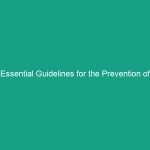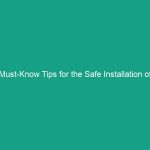Introduction
Good morning team! Today, we’re diving into an essential topic that affects each and every one of us: Must-Know Safety Awareness Guidelines to Protect Your Team’s Well-Being. Understanding and implementing these guidelines is crucial for creating a safe and healthy workplace. Safety isn’t just a checkbox; it’s a culture that we need to foster together for our well-being and productivity.
Understanding Must-Know Safety Awareness Guidelines
So, what exactly are these Must-Know Safety Awareness Guidelines? In essence, they are the foundational principles and practices that ensure our workplace is safe from Hazards that can lead to injuries or accidents. These guidelines are not just abstract concepts; they play a significant role in our daily operations, influencing how we approach our tasks and interact with one another.
Many employees may think that Safety Guidelines are just for compliance or paperwork. However, the reality is that these guidelines are designed to protect us and our colleagues from potential dangers that can arise in the workplace. Ignoring these guidelines can lead to severe consequences, including workplace injuries, decreased morale, and even legal repercussions for the company.
Key Hazards, Risks, and Safety Considerations
Understanding the specific hazards and risks associated with our work Environment is a critical component of safety awareness. Here are some common hazards we encounter:
- Slips, trips, and falls: Often resulting from wet floors, uneven surfaces, or cluttered walkways.
- Manual Handling injuries: Caused by improper lifting techniques or overexertion.
- Electrical Hazards: Including exposed wires or faulty equipment.
- Chemical exposure: Occurring from spills or lack of proper protective equipment.
Ignoring these risks can lead to serious injuries. For instance, slips and falls account for a significant percentage of workplace injuries, which can result in long recovery times and lost productivity. Understanding these hazards is the first step toward mitigating them.
Best Practices, Procedures, & Actionable Advice
Now that we’ve identified the hazards, let’s discuss the Best Practices to ensure safety in our workplace:
1. Conduct Regular Safety Training
Regular safety training ensures that everyone is aware of the latest safety protocols and Procedures. This training should include:
- Emergency response procedures
- Proper handling of hazardous materials
- Use of Personal Protective Equipment (PPE)
2. Implement a Reporting System
Encourage employees to report unsafe conditions or near misses. This not only helps in preventing accidents but also fosters a culture of safety. An example could be a simple online form or a suggestion box.
3. Regularly Inspect Work Areas
Conduct regular inspections of work areas to identify and rectify potential hazards. This proactive approach can prevent accidents before they occur. For instance, ensuring that all walkways are clear and all equipment is in good working condition can significantly reduce risks.
4. Encourage Open Communication
Encourage employees to discuss safety concerns openly. Create an environment where everyone feels comfortable voicing their concerns without fear of judgment. This could be facilitated through regular safety meetings or informal check-ins.
5. Lead by Example
Management should lead by example, demonstrating Safe Practices in their daily routines. When employees see leadership prioritizing safety, they are more likely to adopt similar attitudes.
Regulations, Standards, and Compliance
It’s essential to be aware of the Regulations that govern Workplace Safety. Organizations like OSHA (Occupational Safety and Health Administration) provide Standards that outline the responsibilities of employers and employees in maintaining a safe work environment. Compliance with these standards is critical, not just for legal reasons, but for the well-being of all employees. Understanding these regulations helps us recognize our rights and responsibilities when it comes to Workplace Safety.
Employee Engagement & Discussion
Now that we’ve covered the guidelines and Best Practices, let’s take a moment to reflect. What safety challenges have you encountered in your roles? How can we improve our safety practices together? Your input is invaluable in creating a safer workplace.
Conclusion & Key Takeaways
In summary, the Must-Know Safety Awareness Guidelines to Protect Your Team’s Well-Being are essential for maintaining a safe workplace. By understanding potential hazards, implementing best practices, and fostering a culture of safety, we can all contribute to a healthier work environment. Remember, safety is not just a responsibility; it’s a collective commitment. Thank you for your attention and dedication to prioritizing safety in our workplace. Let’s continue to support one another and work towards a safer future!


